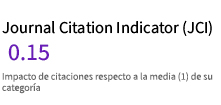The Allegorical Emblematic tradition of the jeu de paume racket as an object of vanitas
DOI:
https://doi.org/10.24310/BoLArte.2012.v0i32-33.4257Abstract
Among the objects that are most characteristically associated with games and that transmit a moral lesson on the vanity of life and the transient nature of earthly pleasures, we find playing cards, dice and the tric-trac board. All these are not infrequently joined by the racket and the ball of the jeu de paume, these take on a negative symbolism as part of this moral lesson to which all the theories of the baroque disillusionment converge. Many books of emblems take up this tradition in their role as iconographic dictionary, the images of which are recognized and interpreted as didactic tools; this is a tradition that has been noted by painters and engravers, who had already been using the racket as a moral allegory since the end of the 16th Century.
Downloads
Metrics
Downloads
Published
How to Cite
Issue
Section
License
Todos los contenidos publicados en la revista Boletín de Arte están sujetos a la licencia Creative Commons Reconocimento-NoComercia-Compartirigual 4.0 cuyo texto completo puede consultar en <http://creativecommons.org/licenses/by-nc-sa/4.0>

Los/as autores/as cuyas contribuciones sean aceptadas para su publicación en esta revista conservarán el derecho no exclusivo de utilizar sus contribuciones con fines académicos, de investigación y educativos, incluyendo el auto-archivo o depósito en repositorios de acceso abierto de cualquier tipo.
La edición electrónica de esta revista esta editada por la Editorial de la Universidad de Málaga (UmaEditorial), siendo necesario citar la procedencia en cualquier reproducción parcial o total.










4.png)
